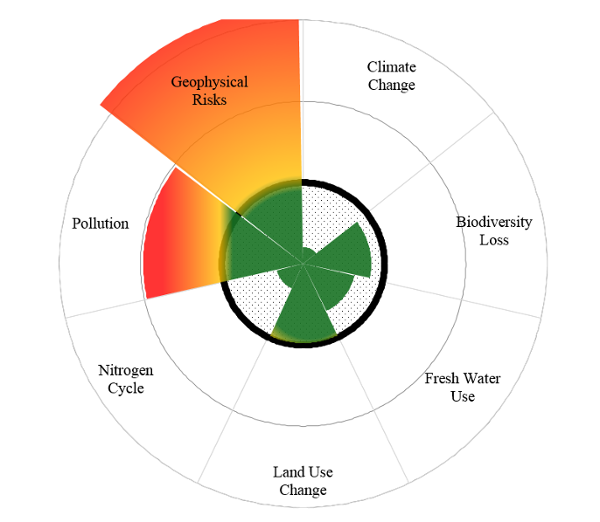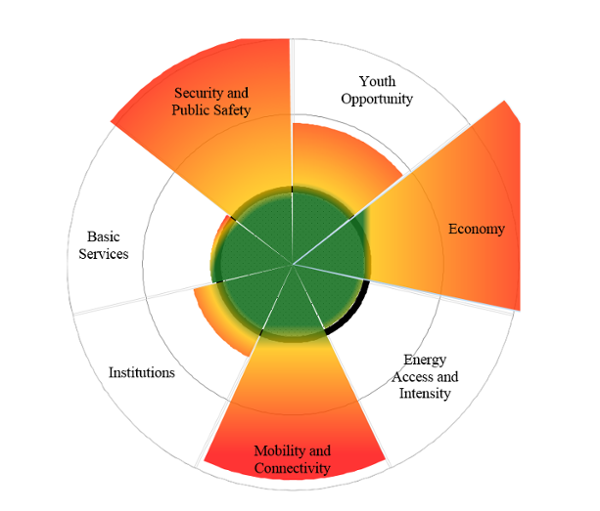Dakar
Although Dakar Metropolitan Area only covers 1% of Senegal’s land area, it is home to nearly 50% of the country’s urban population. Much of the city’s population reside in the ‘Pre-Urban’ part of the metropolitan which is vulnerable to natural disasters, in particular flooding and coastal erosion, which is exacerbated by weak local governance and rising sea levels [1].
On average, Dakar's population has grown 1% per year since 1988 and current predictions estimate the city reaching 9.2 million by 2050 [2]. The city suffers from high ambient air pollution, poor access to clean water for 3% of the population and nearly 25% of the population do not have access to solid waste collection. Figure 1 and Table 1 show the city’s status compared to the global average.

Figure 1: Physical science: Dakar vs. Global Condition
The socio-economic status of Dakar is demonstrated in Figures 2 and Table 2.

Figure 2: Socio-economic: Dakar vs. Global Condition
References
[1] Hyoung Gun Wang, Marisela Montoliu-Munoz, the Geoville Group, and Ndèye Fatou D. Gueye, 2009, Preparing to Manage Natural Hazards and Climate Change Risks in Dakar, Senegal, The World Bank, Washington.
[2] Daniel Hoornweg, and Kevin Pope, 2013, "Population Predictions of the 101 Largest Cities in the 21st Century," Global Cities Institute, Report # 04.
Please note this is a draft version. For development purposes only.